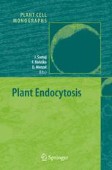Search
Search Results
-
Transcriptome analysis in abiotic stress conditions in higher plants
Drought, high salinity, and low temperature are major environmental factors that limit plant productivity. Plants respond and adapt to these stresses...
-
Signal transduction in plant cold acclimation
Temperate plants respond to low temperature by activating a cold acclimation program leading to enhanced tolerance to freezing temperatures. This...
-
Plant salt tolerance
Soil salinity adversely affects crop productivity and quality. The success of breeding programs aimed at salinity tolerant crop varieties is limited...
-
Plant responses to heat stress
The heat stress response is characterized by inhibition of normal transcription and translation, higher expression of heat shock proteins (hsps) and...
-
Sensors of abiotic stress in Synechocystis
Systematic mutagenesis of histidine kinases in combination with DNA microarray technology has allowed us to identify sensors for cold, hyperosmotic...
-
Abscisic acid signalling
Signalling of abscisic acid (ABA) in plants is characterized by an amazing number of secondary messengers that are part of the pathway or modulate...
-
Chemical Signalling in Beetles
This chapter reviews chemical structures of biologically active, volatile compounds in beetles. Techniques used for structure elucidation are briefly...
-
Insect Chemical Defense
Research on the defensive chemistry of insects during the last decade is reviewed, with special emphasis on non-volatile compounds. The isolation and...
-
Present Status of Antifouling Systems in Japan: Tributyltin Substitutes in Japan
An international conference held by the International Maritime Organization in October 2001 adopted an “International convention on the control of...
-
New Trends in Sample Preparation Methods for the Determination of Organotin Compounds in Marine Matrices
Tributyltin still remains a major issue for the marine environment and its determination is mandatory by legislation in several countries. As for...
-
Development, Occurrence and Regulationof Antifouling Paint Biocides: Historical Review and Future Trends
Antifouling agents have been used on ships since the ancient Roman and Greek civilizations. A brief history is provided through to the demise of...
-
Antifouling Paint Booster Biocides: Occurrence and Partitioning in Water and Sediments
Following the ban on the use of tributyltin (TBT) in antifouling, several organic booster biocides have been used in conjunction with copper in...
-
Rab GTPases in Plant Endocytosis
The Rab family is part of the Ras superfamily of small GTPases. In eukaryotes Rab GTPases are present as members of gene families, and the...
-
Methods and Molecular Tools for Studying Endocytosis in Plants---an Overview
Proteins of the endocytosis machinery in plants, such as clathrin and adaptor proteins, were isolated and characterized using combinations of...
-
Tip Growth and Endocytosis in Fungi
Recent advances in molecular cell biology have provided new insights into different cellular processes that all turn out to contribute to...
-
Worldwide Occurrence of Organotins from Antifouling Paints and Effects in the Aquatic Environment
Organotins belong to the most toxic pollutants for aquatic life known so far. Widespread contamination of harbors and areas with high ship**...
-
Auxin Transport and Recycling of PIN Proteins in Plants
Polar transport of the phytohormone auxin is mediated by plasma-membrane and endosome localized carrier proteins. PIN proteins are the best...
-
MDR/PGP Auxin Transport Proteins and Endocytic Cycling
Auxin is an essential regulator of plant growth and development. Polarized transport of auxin is responsible for apical dominance, tropic growth,...
-
Recent Progress in the Total Synthesis of Dolabellane and Dolastane Diterpenes
The isolation, structure and total synthesis of members of four classes of diterpenes has been summarized. Dolabellanes, neodolabellanes, dolastanes...
-
Recent Advances in Vinylogous Aldol Reactions and Their Applications in the Syntheses of Natural Products
The synthesis of complex natural products still remains as the bottleneck for the biological evaluation of such compounds. In contrast to the...
